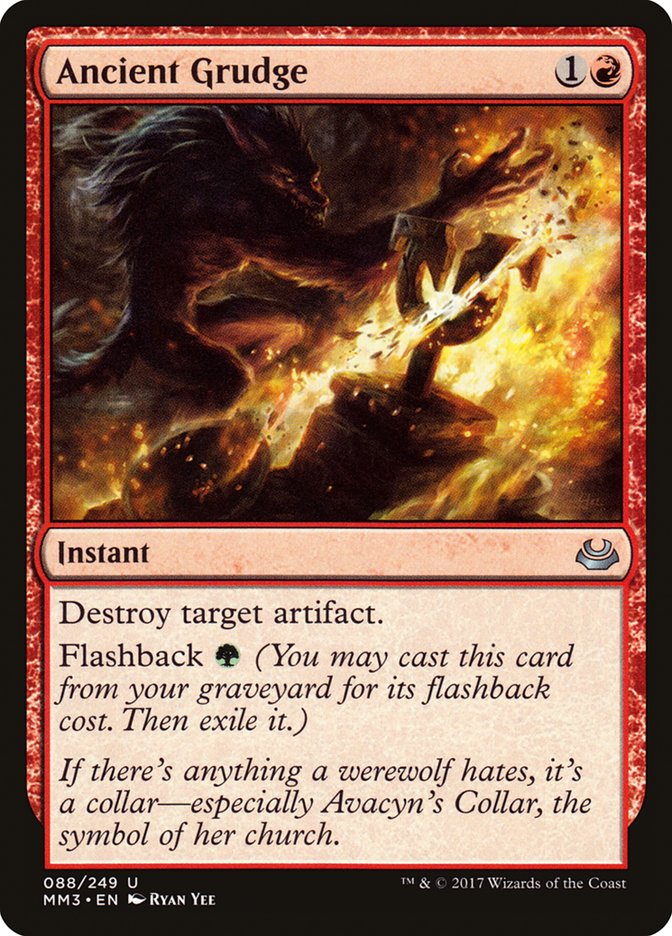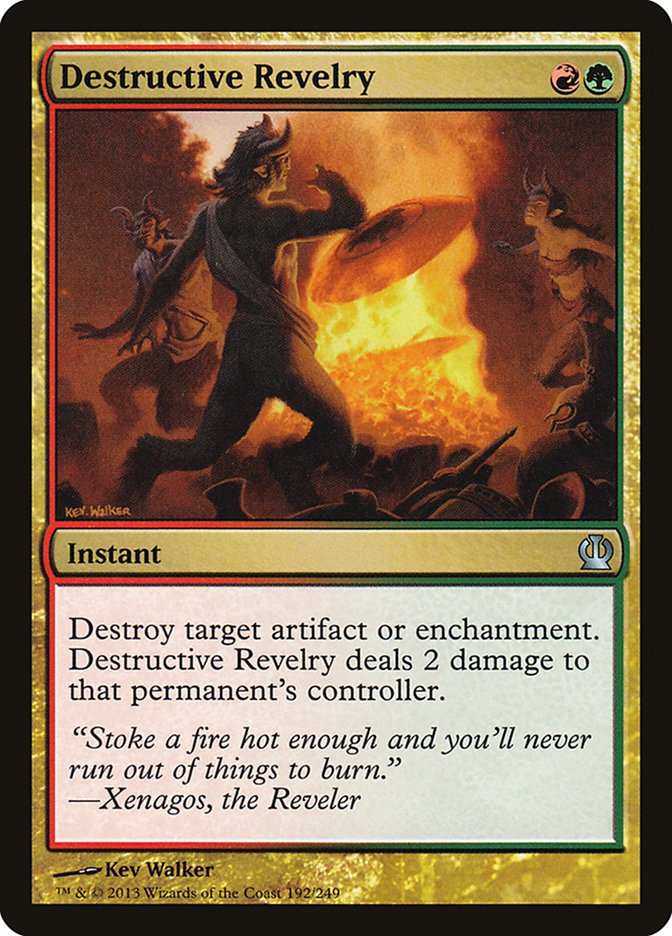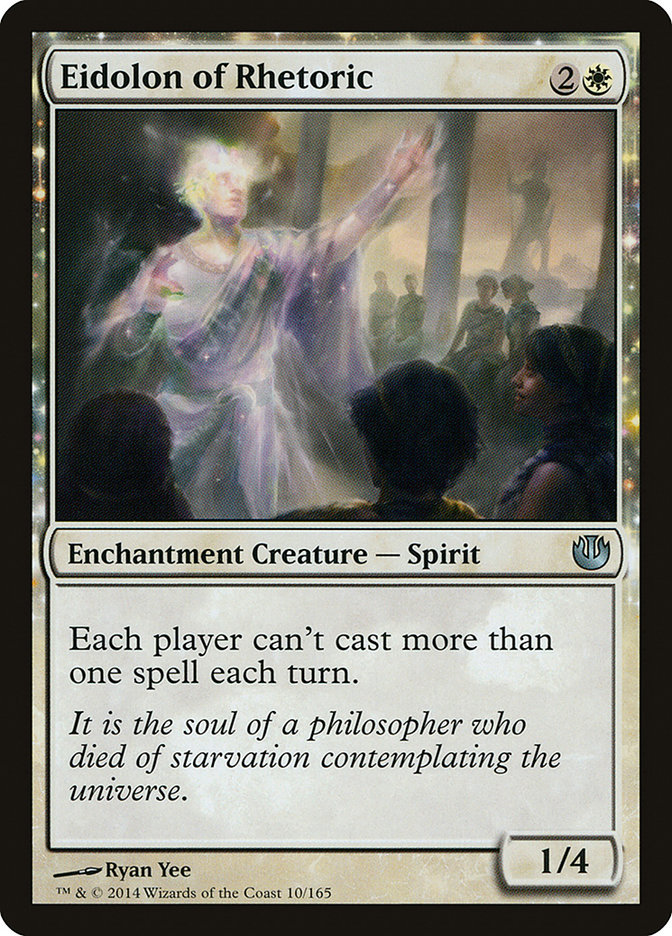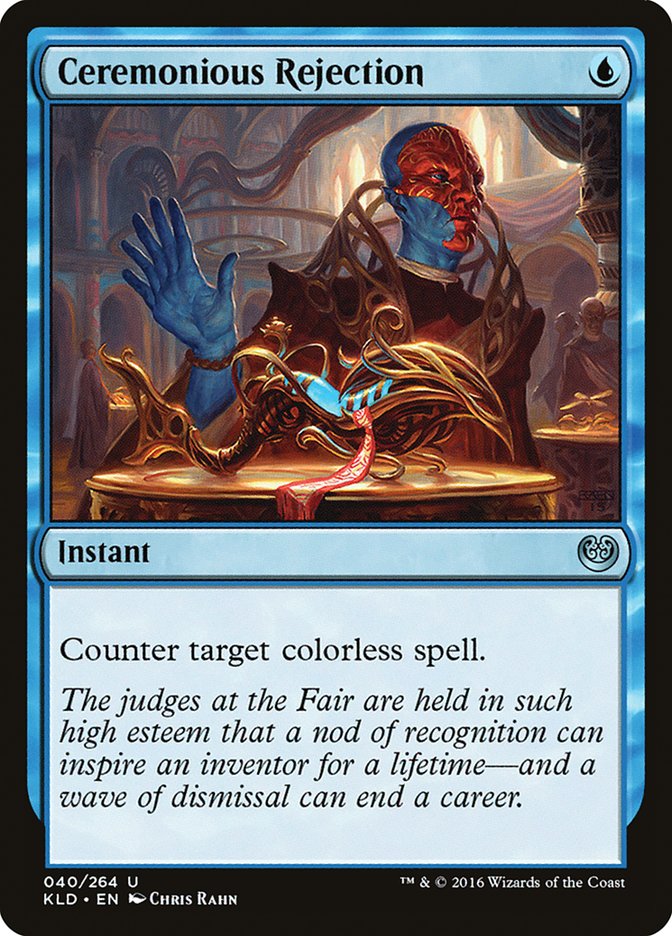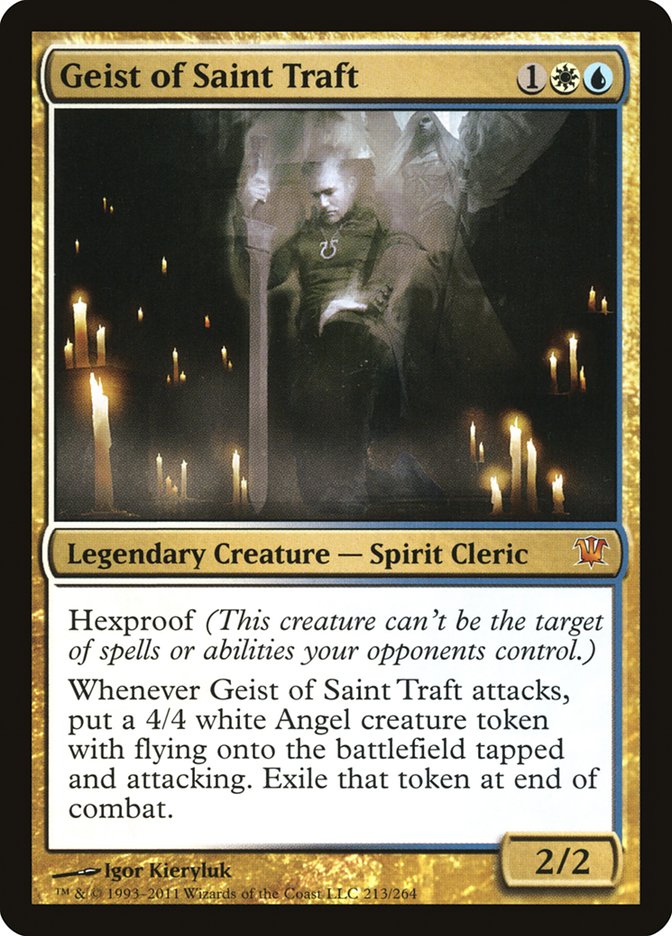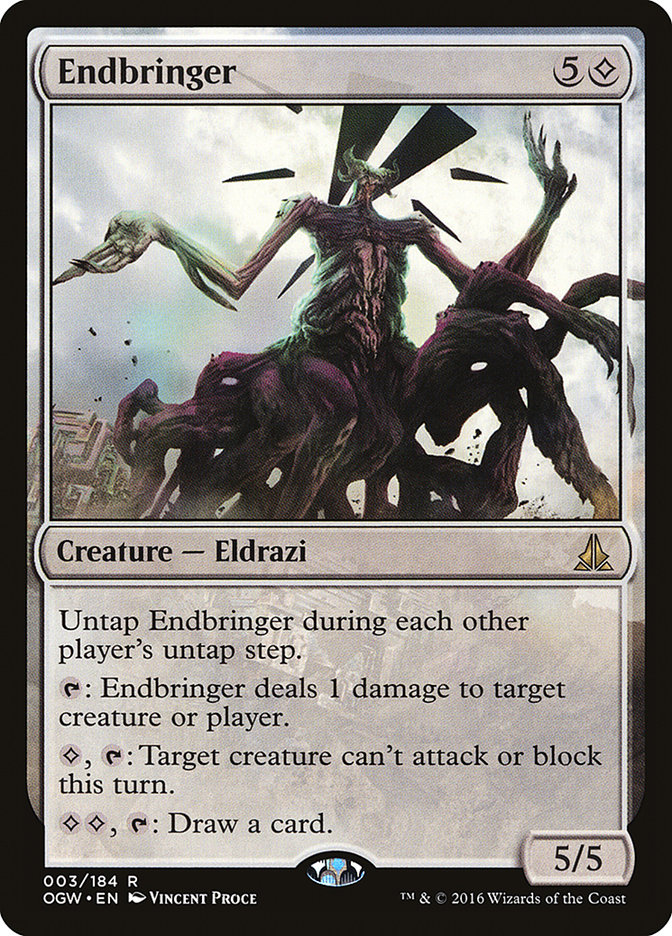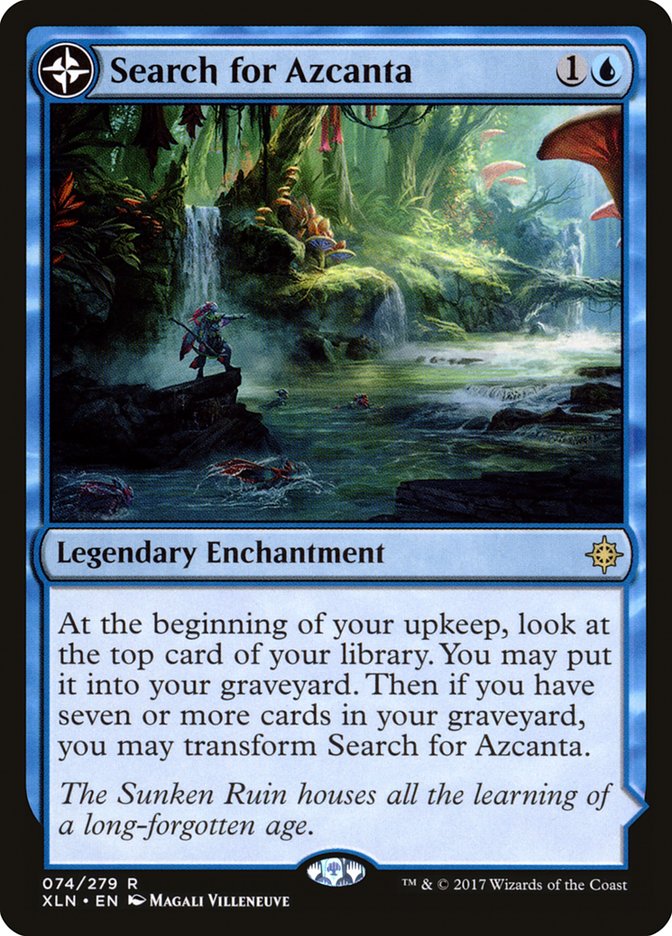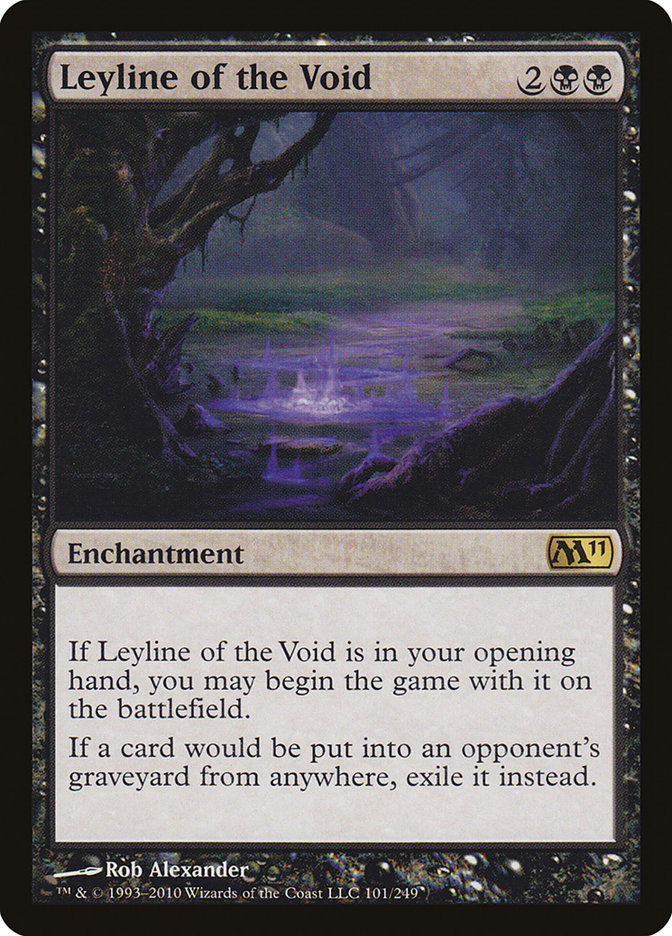How much of your possible edge in Modern do you think comes from building and using your sideboard properly?
Think about it this way: almost every Modern deck you play against has been around for years. The lists are predictable within a few cards. Yeah, okay, your Collected Company Vampires deck might be something none of your opponents have played against, but let’s be real; it doesn’t matter that much which creatures you’re hitting off your Collected Company most of the time, which is why Collected Company Something Weird occasionally pops up as a surprise “new deck.”
Anyway, the point is, when your opponent plays a Darksteel Citadel and a Vault Skirge, you know roughly 52 cards in their maindeck for sure. But how much of their sideboard do you really know? Okay, Affinity’s an extreme case where there are almost no options in the maindeck and the sideboard can include almost anything, but while I can expect my Burn opponent to have a few Deflecting Palms and a lot of Destructive Revelries, there’s a lot I don’t know.
There’s a clear reason for this: your maindeck is designed to do something well more or less in a vacuum. You play the best cards available for your strategy, the ones that have been tested and proven to work well against a wide variety of possible opponents. It has very little reason to shift substantially over time.
By contrast, your sideboard needs to adapt to the ebbs and flows of the metagame. You need to predict what you’ll face and form a plan for how to beat them, and because it’s much harder to copy a sideboard plan from the internet, you’re going to have to put your own personal spin on it. You’re going to have to think about what you’re taking out, what your plan looks like, and what you need to accomplish that plan.
When people talk about edges in Modern, they often focus on deck familiarity, but how much of that really just means “knowing how to sideboard?” I’ve mentioned before that a lot of players would be better off if they didn’t have the option to sideboard. Yes, a lot of things are often obvious enough; clearly, no matter what card you finally decide to cut, your Affinity matchup will probably improve when you add Ancient Grudge or Stony Silence, but most of the time it’s not so straightforward, and people often make big mistakes, like walking right into their opponents’ plan by preparing for their Game 1 deck instead of anticipating their sideboarding.
Fundamentally, sideboarding, like anything else in Magic, is about interactions rather than cards. It’s about your gameplan. If I’m a new Burn player and I’m trying to decide if I want Ancient Grudge or Destructive Revelry in my sideboard, I probably shouldn’t start by asking my friend, a Jund player, whether Ancient Grudge or Destructive Revelry is a better sideboard card against Affinity.
First, I need to consider the other factors, like the importance of Destructive Revelry against anyone with Leyline of Sanctity (and the extent to which my plan after sideboarding against decks that are likely to have Leyline of Sanctity is weak to that card), but even in the matchup in question, I need to consider the possibility that my plan is different enough that the best card in the matchup for Jund may not be the best card in the matchup for me. Yes, in this case, Ancient Grudge is probably just an objectively better card in the matchup for either deck, but it’s not that hard to imagine a slightly different scenario where Destructive Revelry is better in the Burn deck and Ancient Grudge is better in the Jund deck because the damage matters more for the Burn deck and they need to make sure that all their cards stay on-plan, while the Jund deck is trying to play an attrition game that Ancient Grudge happens to complement perfectly.
Looking at the SCG Charlotte results, when I see U/R Gifts Storm doing so well, I want to play Death’s Shadow, Jeskai, or possibly Collected Company with a lot of copies of Eidolon of Rhetoric. Jeskai in particular seems like it should be a great choice to me; I’d expect it to do well against Affinity, U/R Gifts Storm, and Death’s Shadow, the three most successful decks.
At the same time, it looks like Jeskai had a pretty rough Day 2. I’m assuming a weak Eldrazi Tron matchup accounted for a lot of that; even though Eldrazi Tron also did poorly on Day 2, it was the most popular Day 2 deck…but given its lack of success, maybe things look good for Jeskai moving forward? A big question mark for me is the Jeskai / Collected Company matchup. I don’t have enough experience with either deck to confidently state who’s favored there.
A big question to ask is whether you can flip a matchup in your favor, especially if it’s one of the major weaknesses of your archetype. For example, Jeskai against Eldrazi Tron: we know that Ceremonious Rejection is a great sideboard card available to Jeskai against Eldrazi Tron, but does that accomplish what we need?
Specifically, it’s a great card in that it lets us make a single very profitable mana exchange, but if our Jeskai deck is built as a control deck and the Eldrazi Tron deck is still doing more powerful things than we are in the late-game, it’s possible that simply adding Ceremonious Rejection only delays the inevitable. What we need is something that fundamentally changes the dynamic of the matchup. Merely slowing the game down isn’t enough. We need to end it.
Geist of Saint Traft is where Jeskai usually goes to end games quickly, but that might not be the right approach here, since it has a pretty bad Matter Reshaper and Thought-Knot Seer matchup. I was wondering if maybe a Dragon was a better approach, to fly over, but they have Dismember. They can also answer big creatures with Endbringer.
What if we went over the top with Consecrated Sphinx? It’s big enough to live through Dismember, beats most of their creatures in a fight, and should win via extra cards even if they can tap it down for a while. Ceremonious Rejection is an upgrade over another removal spell, but Consecrated Sphinx can fundamentally change what the matchup is about and who has inevitability.
Is it the best card for the matchup, or even an effective sideboard card? Do we really live to six mana? I honestly don’t know, as I haven’t tried it, but the point is that sometimes, if you’re trying to reverse a bad matchup, you need a card that can change the dynamic, not a mere upgrade.
I’m guessing that, in most players’ hands, Jeskai is favored over Death’s Shadow, but I’d ask why it has to be this way. In the past, I’ve beaten Jeskai with Death’s Shadow by blanking Lighting Bolts that they expected to be good against my Wild Nacatl Death’s Shadow Zoo deck. I presented a bunch of Tarmogoyfs, Hooting Mandrills, and Death’s Shadows and ran them out of Path to Exiles while going wide with Lingering Souls and Ranger of Eos. But these days, the Grixis Death’s Shadow deck is a little different, and Jeskai won’t lean as much on Lightning Bolt and should have cards Celestial Purge to complement their Path to Exile.
No sacred cows.
Have you ever considered sideboarding out Death’s Shadow? I don’t think I’ve ever done it, but these days, Grixis Death’s Shadow really isn’t that many cards off from Grixis Control. If your opponent has a bunch of easy answers to Death’s Shadow and can finish you off out of nowhere with Lightning Bolt, Lightning Helix, and Snapcaster Mage if you let your life total get too low so that you can maximize Death’s Shadow, why even try?
You’re the control deck with discard and a bunch of two-for-ones in a control mirror. What if you side out Death’s Shadow and bring in Search for Azcanta (or some other card advantage engine if you’re worried about graveyard hate; maybe Ancestral Vision or Jace, Architect of Thought)? How is their control deck that’s looking you kill your creatures and burn you out from nine going to beat you when you leave your life at fifteen and fight them on a card advantage axis?
On that note, I think Search for Azcanta is overlooked as a sideboard card in Modern in general. Grixis Death’s Shadow might be the wrong place for it, because people are trying to attack their graveyard to prevent delve, Kolaghan’s Command, and Snapcaster Mage anyway, but when I see something like Pete Ingram’s piece on moving away from Search for Azcanta in Jeskai, a deck that I’d expect it to play very well in, I wonder if the real home for the card is in the sideboard.
In a lot of ways, it’s the classic Jace Beleren (in Faeries almost ten years ago…my example is getting outdated, but that’s where I learned this stuff and it’s still the best example to me) situation: an attrition card that plays perfectly with the nature of post-sideboard games, but is a little too slow to be part of your Game 1 strategy.
Maybe in Game 1 you don’t have time to really work Azcanta, the Sunken Ruin. Maybe Modern is too fast. But after sideboarding, when you and your opponent have better, cheaper interactive cards and cards trade more and you have cheap, high-impact cards to find, what could possibly be better than a card that turns on quickly when cheap cards trade early, dominates small games (those where most resources have traded off), and quickly finds bullets?
If you have a blue deck where exiling your graveyard isn’t a top priority for your opponent, I think there’s a great chance you have a deck that could easily pull the rug out from under your opponent this weekend at SCG Cincinnati with a small shift to a Search for Azcanta-based gameplan.
This is the kind of move that wins games of Modern. Your sideboard shouldn’t just be a collection of bullets; it should be a compilation of hidden gameplans to level your opponents.
Obviously, some matchups don’t require radical shifts. Sometimes your fundamental gameplan is sound, and you just want more of it, or to do it a little better. Sometimes, in those cases, the sideboard slot could be better spent elsewhere, but sometimes not.
The takeaway here certainly shouldn’t be that Ceremonious Rejection and other “tuning” sideboard cards are bad. Often, they’re exactly what you need, and games of Modern often do come down to making a single big, profitable exchange, like a one-mana instant for a five-mana sorcery, and in some matchups, all that matters is having the right bullet, like Leyline of the Void against Dredge (though you’d still like to have a plan in case they drew their Nature’s Claim).
At this point, you probably know your maindeck, but while you’re fine-tuning your sideboard, take some time and really think through your sideboard plans, and when you’re going down the list of decks you expect to face and looking at your “ins” and your “outs,” maybe instead of just thinking about the cards your deck can afford to lose or the ones that haven’t performed well in the matchup, take time to ask yourself how the post-sideboard games play out.
What is your opponent trying to do? What are you trying to do? How will they beat you? How can you stop that? Does your sideboard do everything it can to further your gameplan or prevent theirs?
These questions can lead you to sideboard the right answers.



